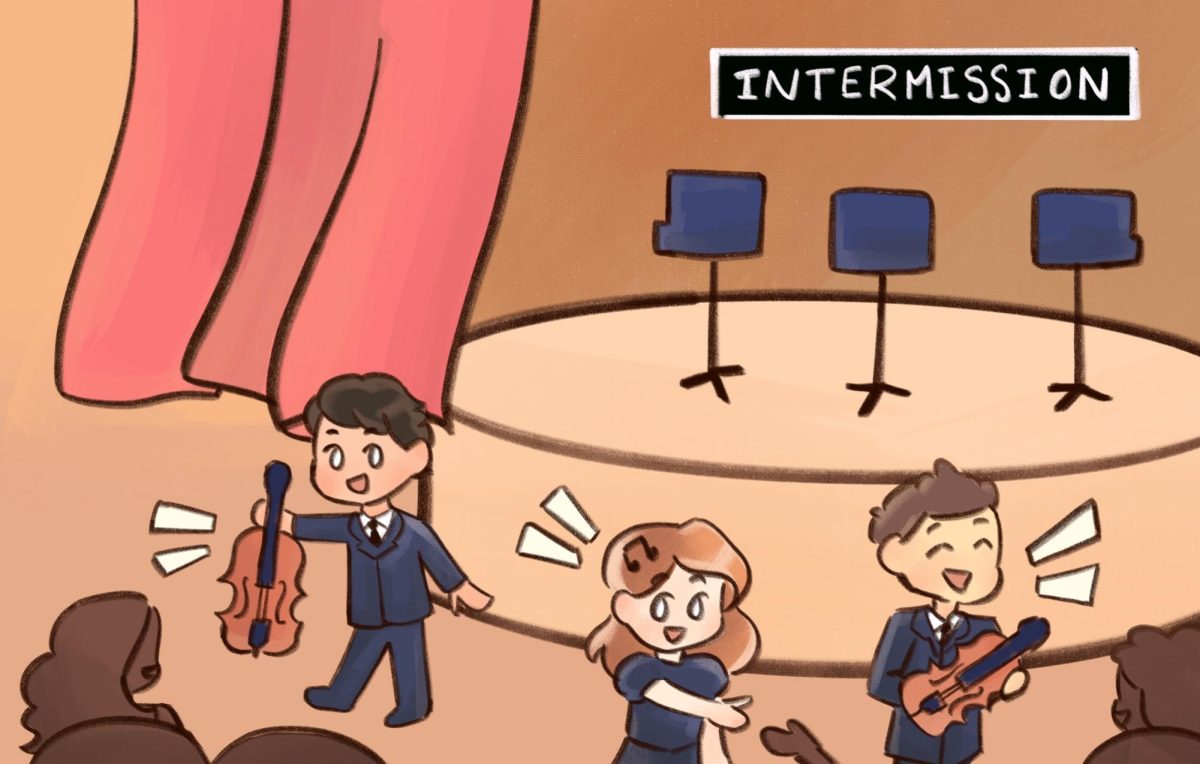Mundane, old-fashioned and complicated.
These are the one word responses of some Portola High students to what their perception of live classical music is. The negative perception that has gripped the younger generation is evident. Since their inception, classical music concerts have consistently catered to the same age group of 50+, attracting fewer younger listeners, according to the New York Times.
Today, we are seeing the result of decades of systemic resistance to change in classical music, which leads to an outdated, stagnant interest in classical music.
Upon asking former Chicago Tribune arts critic and pianist Howard Reich about his opinion on the lower rates of young attendees for classical music, he mentioned that it is a niche genre. And though the general public may often recognize famous classical pieces, it does not necessarily make them listeners.
“Classical music sells itself to those who are interested,” Reich said. “If you’re listening to classical music with K-pop, or jazz, you’re not listening to classical music. You’re listening to a passing scent of it. So that’s not really classical music as we understand it, played by virtuoso musicians at the highest level who play scores of extraordinary complexity. Classical music is a separate and different world.”
The primary factor contributing to these demographic issues is the marketing of classical music, particularly among younger generations. Contrary to pop music, where lyrics give the listener a sense of an artist’s experience, classical music is generally deemed less interactive and less stimulating.
“More than three in four adults (76%) say they would be more likely to attend an orchestral concert if orchestras took steps to modernize the concert experience,” according to a study by the Royal Philharmonic Orchestra. Modernizing could look like anything from a shorter repertoire and informal dress codes to matinee concerts and audience-conductor conversations.
Rather than altering the classical concert experience, orchestras should take advantage of intermission to gain more audience interest. Intermission is the perfect time to modernize live concerts as players and viewers could interact, or a mini-quartet could serve as an impromptu matinee concert.
However, the longstanding traditions of live classical music, such as the formal dress codes and the long repertoire from famous Romantic era composers, cannot be ignored simply due to audience preference. What would this mean for the performers and audience members who enjoy the classiness of classical music, especially during live classical concerts?
The average intermission in classical concerts is 20 minutes, arguably a short amount of time to present the more modern experience. Many may say having performer interactions before or after a concert is the “sweet spot.” But because orchestral performers need to mentally and physically prepare themselves for a performance, it is important to not remove their preparation time solely in favor of the enjoyment of audience members. Likewise, performers require rest after a rigorous performance; following the concert is thus also an unsuitable time for those ‘meet-and-greet’ interactions.
“I think having extended intermissions with a variety of other genres performing as well is a really good idea,” senior Ian Jun said. “I think that really helps make the overall experience a lot more fun and enjoyable for all age groups. There could definitely be other types of mini performances, like an electric guitar player playing a crazy riff, a snack booth or just anything that’s fun.”
If intermissions were extended to 30-40 minutes, adding to the overall event time, there would be ample time for conductor-audience interactions to modernize the performance without interfering with performers’ preparation and relaxation. Keeping classical music relevant and appealing for future generations is possible by striking the right balance between preserving its essence and infusing it with modernity.
So let us forge a melodious path between the past and future, uniting classical music lovers of all ages and preserving classical music’s timeless beauty for future generations.
This story was originally published on Portola Pilot on November 8, 2023.




































